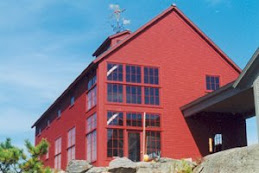

We invited our good friend, Dave Emond, over to our house to take some professional pictures of the inside of the house. Unfortunately, it was actually TOO sunny and bright inside and we were getting glare in all the shots. Here are a couple nice ones he captured. The top picture is taken from the dining area looking toward the stairs and kids play area (the cleanest it's ever looked and will ever look again).
The other picture is of our bedroom - I wanted to show everyone how the sliding barn doors turned out. We used these beautiful solid wood doors salvaged from an office building remodel. Most of the doors were full view glass doors, but we used the only solid door for our bedroom. Most of the doors in the house were traditional swing doors, but in two places we used this inexpensive barn door hardware that we found at Tractor Supply. Tractor Supply came through for us on two occasions when we couldn't afford the expensive designer look we wanted. We used galvanized hog fencing for the railing on the stairs and balcony at the cost of $39 for a 10 foot sheet!! And our building inspector was fine with it because it had small enough holes. And then we found this sliding door hardware at a fraction of the cost of the stuff we were originally pricing out. So we are really embracing this whole barn theme, after all. We finally got some fresh snow yesterday, so tonight I'm going to try to take some outdoor shots as the sun goes down. The house looks awesome at night with the light shining up out of the cupola windows.








